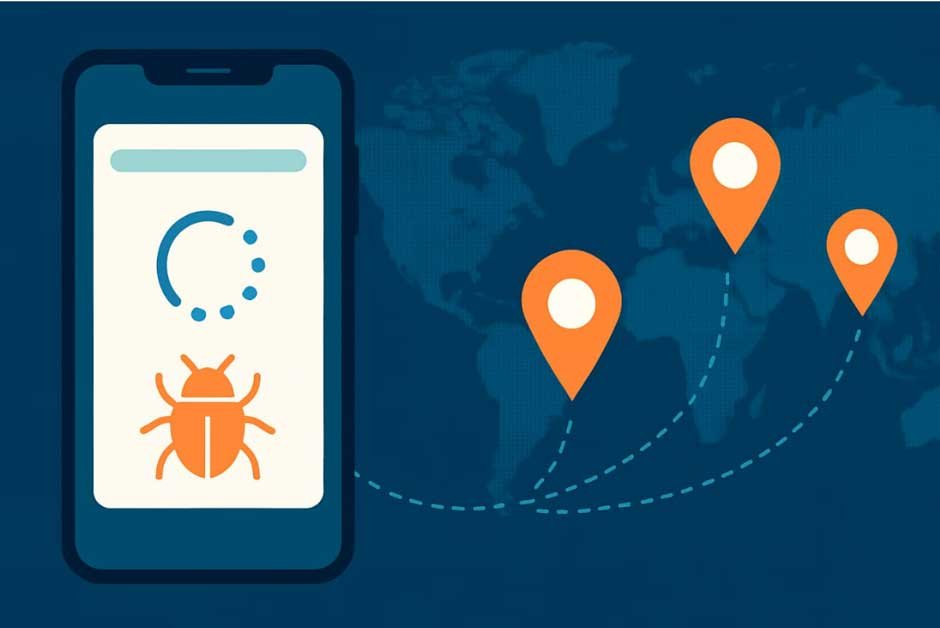Have you ever launched an app that worked perfectly in your office, only to see users in other cities complain about lag, failed logins, or blocked access? It’s not just bad luck. It’s the result of limited testing environments that ignore one crucial factor: the carrier network.
Today’s users connect from different countries, mobile ISPs, and dynamic IPs. And that means your app is exposed to dozens of unpredictable conditions, from latency shifts to IP-based restrictions. If you’re not testing across real networks, you’re not really testing.
And this is where 4G mobile proxies bridge the gap between lab testing and real-world performance.
Why Traditional Testing Misses the Mark
It is standard practice in the majority of teams to use VPNs, emulators, or data center proxies when testing. Although these tools are useful to cover the basics, they cannot measure how real users will use your app on mobile networks.
Here’s what they miss:
- VPNs use static data center IPs that often get flagged, don’t reflect mobile performance, and may misrepresent the user’s true location.
- Emulators simulate devices but not the network conditions those devices rely on.
- Cloud testing platforms offer device variety but can’t replicate carrier-level behavior like throttling or IP filtering.
The result? Your app might work perfectly in one region but quietly fail in another, without any obvious error or log pointing to the issue.
The Real-World Problem: A Fragmented Mobile Landscape
Mobile carriers don’t follow a single standard. Each has its own infrastructure setup, and these differences can directly impact how your app performs. Some use aggressive caching, while others route traffic through regional proxies. Many throttle speeds during peak hours, or apply IP filtering that silently blocks or alters app behavior.
A few common issues include:
- Regional traffic routing that affects latency or content access
- IP filtering rules that trigger unexpected restrictions or errors
Now project this to dozens of ISPs and ten countries. Not being able to see these carrier-level fluctuations, your app could be behaving differently, violating compliance, or even be flagged as suspicious, and you may have nothing to show in the logs in the way of evidence.
4G Mobile Proxies: A Practical, Scalable Solution
To overcome the limits of traditional testing tools, 4G mobile proxies offer something far more accurate: real-world access. These proxies route your traffic through actual mobile devices with live SIM cards connected to real carrier networks.
That means your QA or dev team can test exactly how a user in New York on Verizon or in Bangalore on Jio would experience the app. You’re not simulating the network; you’re using it. Since these are authentic mobile IPs, they’re far less likely to be flagged or blocked. This allows you to:
- Bypass IP-based restrictions or firewalls
- Access geo-specific content and features
- Test login, payments, or loading times under real carrier conditions
With mobile proxies, you’re not guessing how your app will behave; you’re seeing it in action, exactly as your users would.
Common Use Cases for Mobile App Teams
Mobile proxies are not just for “hackers and scrapers”; they’re becoming essential infrastructure for modern QA and dev teams.
Here’s how they’re being used today:
- Geo-based Feature Testing: Roll out features based on user location? Mobile proxies let you verify exactly how those features behave in the target region without needing testers on-site.
- Performance Testing Under Mobile Conditions: Real 4G conditions vary. Proxies help test how your app handles bandwidth drops, carrier routing quirks, and latency shifts across different providers.
- Avoiding IP-based Restrictions: If your test accounts get flagged when routed through VPNs, mobile proxies offer a safer alternative. Their IPs are seen as real user activity, not automated bots.
- A/B Testing Across Markets: Want to run experiments by region? Easily simulate a user in Tokyo vs. one in Paris and test the response difference with precision.
- Localization and Compliance Validation: If your app needs to meet legal or content restrictions based on geography, proxies help ensure your app is compliant without crossing borders.
Why Developers Buy Elite Proxies
If you’ve searched for mobile proxy solutions, you’ve likely seen terms like “elite proxies.” But what does that really mean?
Elite proxies are a step above regular proxy services. They offer:
- High uptime and session stability
- A wide variety of geo-locations and mobile carriers
- Clean, unbanned IPs for secure testing
- Session control (sticky IPs or rotating sessions)
- Encrypted, anonymous tunneling
When serious dev teams buy elite proxies, they get fewer false negatives during testing, faster bug replication, and a real-world view of how their product behaves across markets.
How to Integrate Mobile Proxies into Your Testing Workflow
You do not have to replace your testing stack. A majority of 4G proxy providers are easy to integrate with HTTP/S or SOCKS. It implies that you can just insert them into your browser, automation frameworks (such as Selenium or Puppeteer), and mobile simulators.
Once integrated, you can begin testing specific flows from targeted regions:
- Simulate a login from New York on a T-Mobile IP
- Test a checkout flow from Jakarta on Telkomsel
- Validate local offers from Berlin using Vodafone IPs
Rotate proxies to test scalability. Use sticky IPs for full user sessions. And monitor how network shifts affect every layer of the user journey.
Final Thoughts
Mobile apps don’t live in the lab. They live in real pockets, on real streets, across thousands of mobile networks. When you are testing on emulators or Wi-Fi or fiber only, you are not seeing the entire truth. 4G mobile proxies don’t just fill in the gaps; they replace guesswork with clarity. From geolocation bugs to carrier-specific throttling, they give you the edge to release confidently, no matter where your users are. In the modern mobile landscape, you don’t just ship code; you ship experience. Make sure yours survives the network it’s delivered through.












